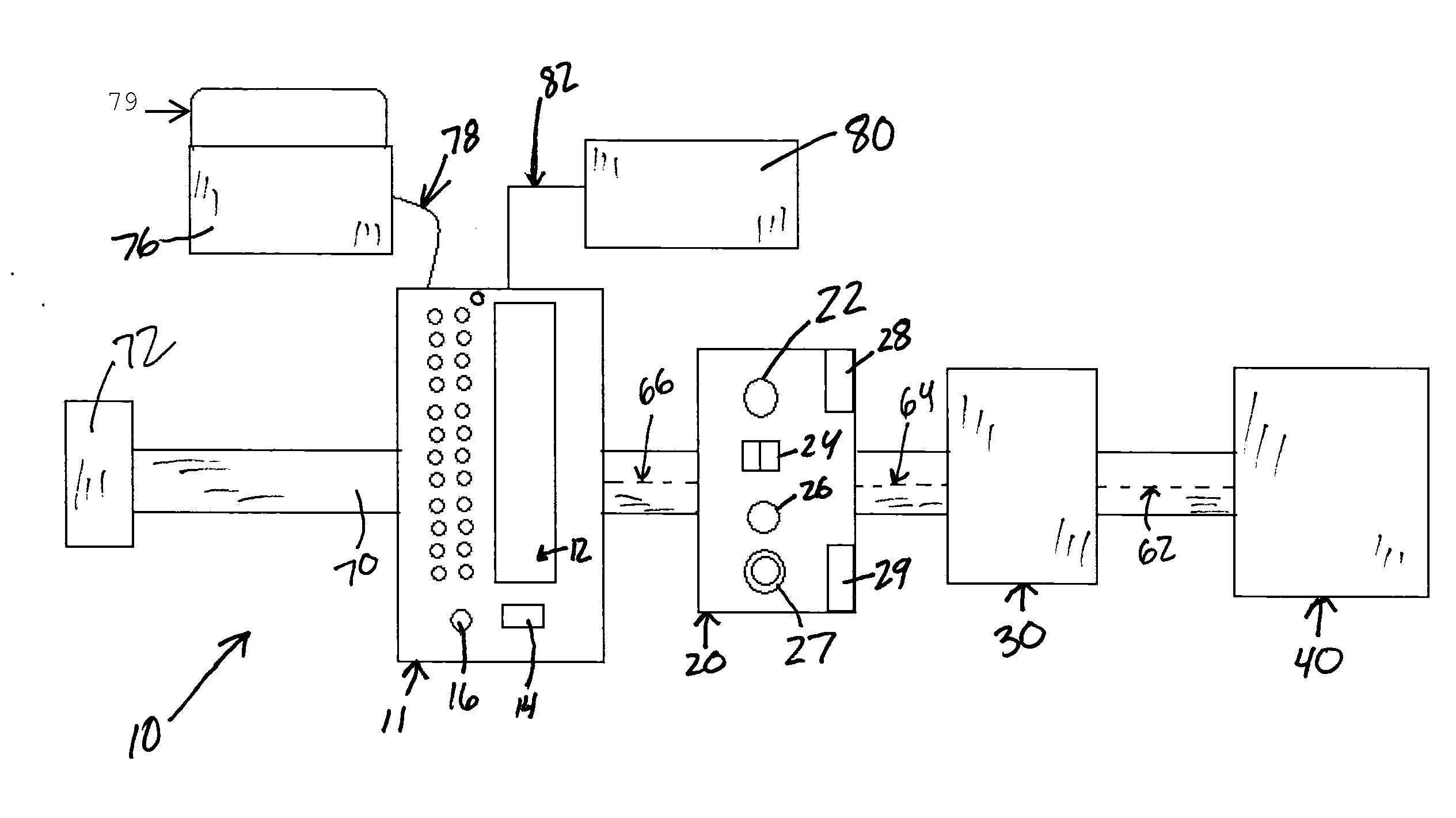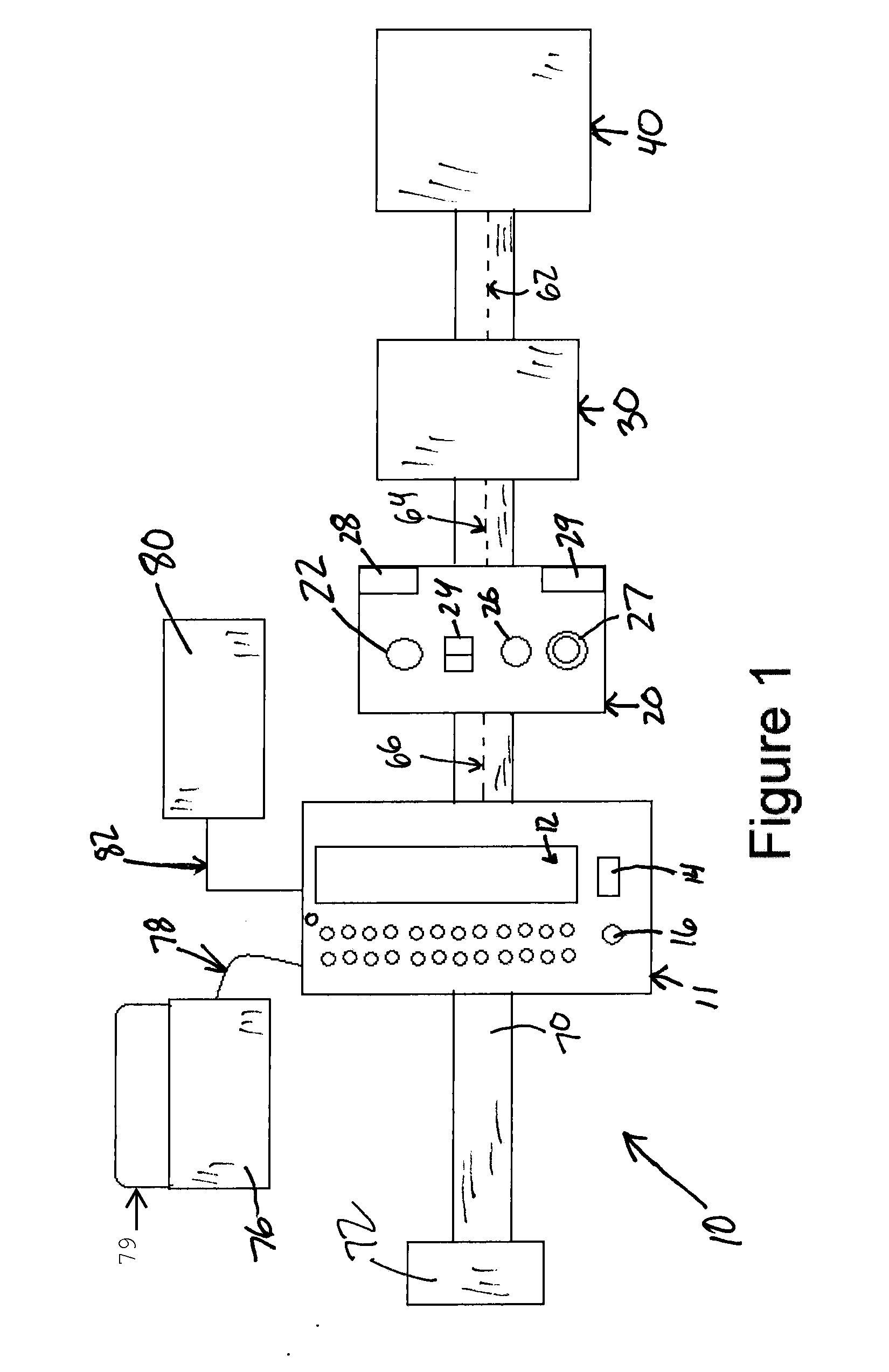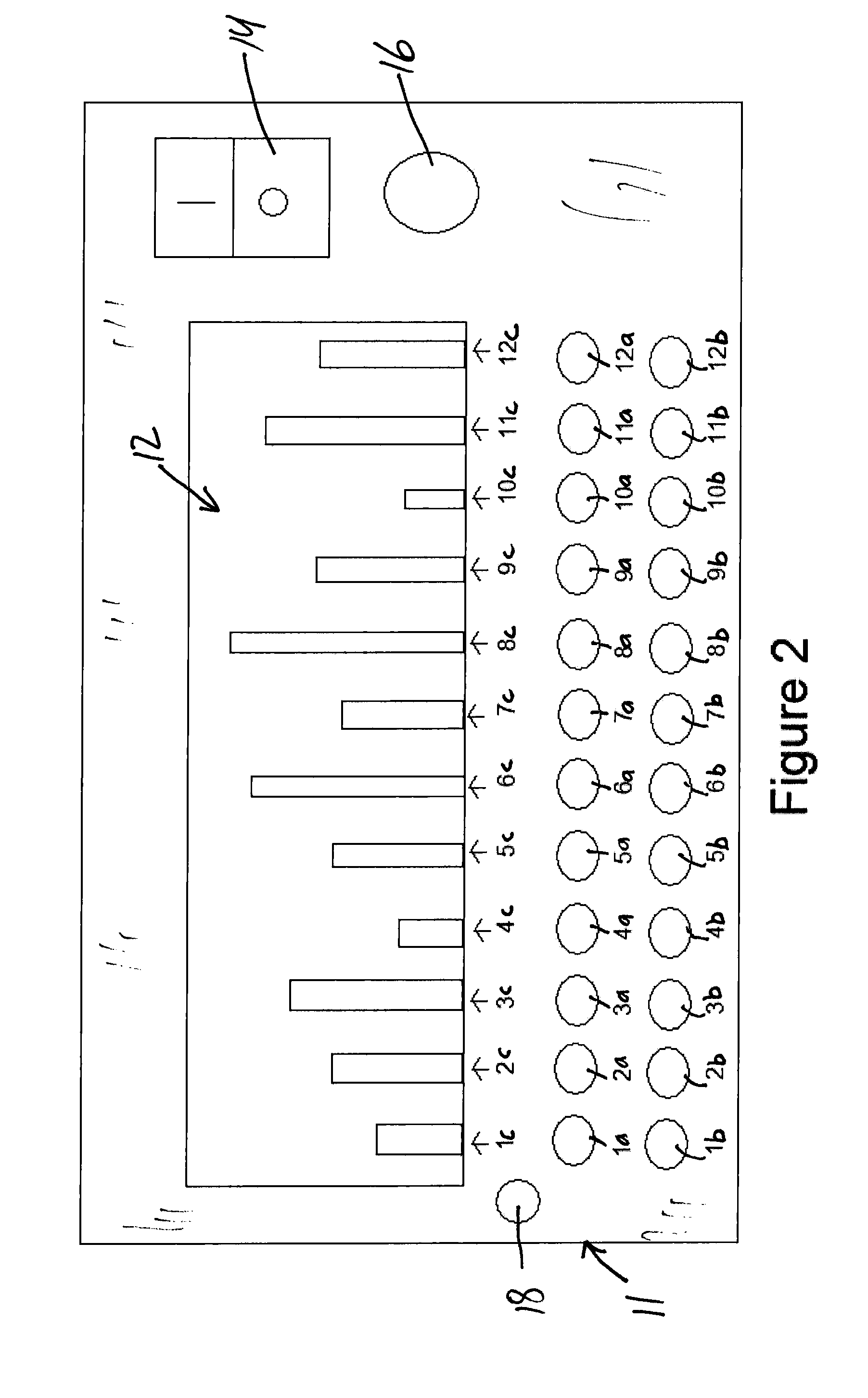Light-Weight Analyzer For Odor Recognition
a technology of odor recognition and analyzer, which is applied in the field of light weight analyzer, can solve the problems of clandestine grave locating, odor recognition (in locating and identifying individuals), and difficult, costly and time-consuming tasks, and achieve the most difficult task currently facing archeologists, anthropologists, and law enforcement personnel in the field of locating buried human remains
- Summary
- Abstract
- Description
- Claims
- Application Information
AI Technical Summary
Benefits of technology
Problems solved by technology
Method used
Image
Examples
Embodiment Construction
[0079]The invention provides an apparatus and a method for detecting a burial site of human remains. An air stream is drawn through an air intake conduit from locations near or above potential sites of human remains. As used herein the term “near or above” means that an air stream can be drawn through an air intake conduit from at least a few centimeters, to at least an inch or more, or one or more feet, from a potential site of human remains. The air stream is monitored by one or more metal oxide sensors to determine whether the air stream includes one or more chemical compounds (e.g., chemical vapors). The presence of certain chemical vapors in the air stream indicates that a burial site of human remains may be present.
[0080]Non-limiting examples of chemical compounds liberated during the human decomposition process can include: (1) cyclic hydrocarbons such as 1,4 dimethyl benzene; 1,2 dimethyl benzene; ethyl benzene; toluene; styrene; 1-methyl-2-ethyl benzene; and C4-benzene; (2)...
PUM
| Property | Measurement | Unit |
|---|---|---|
| flow rate | aaaaa | aaaaa |
| flow rate | aaaaa | aaaaa |
| time | aaaaa | aaaaa |
Abstract
Description
Claims
Application Information
 Login to View More
Login to View More - R&D
- Intellectual Property
- Life Sciences
- Materials
- Tech Scout
- Unparalleled Data Quality
- Higher Quality Content
- 60% Fewer Hallucinations
Browse by: Latest US Patents, China's latest patents, Technical Efficacy Thesaurus, Application Domain, Technology Topic, Popular Technical Reports.
© 2025 PatSnap. All rights reserved.Legal|Privacy policy|Modern Slavery Act Transparency Statement|Sitemap|About US| Contact US: help@patsnap.com



